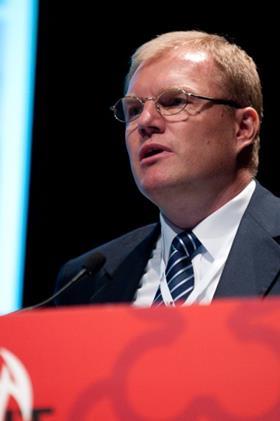
Supply chain innovation: new solutions for Asia
Promoting supply chain technologies and solutions in Asian markets has never been an easy feat, especially where many participants in the supply chain tend to see the cost rather than the value of such services.
The final session of the Asiafruit Congress offered an insight to some innovative products and services that are now being developed in Asian markets.
Thue Barfod, Maersk Line’s reefer business development manager for Asia-Pacific, South Asia and the Middle East, explained how the world’s leading shipping line had set up MCC in Singapore, a dedicated subsidiary for servicing the rapidly growing intra-Asian trade. “We want MCC to be the equivalent of Ryanair in Europe – low cost and efficient,” he said.
One supply chain innovation Maersk is now bringing to Asia is StarCare, a lower cost controlled atmosphere container technology tailored to carry bananas over longer distances. “StarCare maintains cargo quality for up to 50 days and this could help Philippine bananas to open up new markets in the Black Sea and Europe. We’ve already done a successful trial shipment of Philippine bananas to Europe,” said Mr Barfod. “It could also be used on banana shipments from India or Sri Lanka into Europe.”
Purfresh’s David Bouchard, meanwhile, outlined how the company’s ozone-based technologies could save costs for shippers by preventing spoilage and preserving shelf life. “Some 4.5-5m reefer container trips are made globally each year, but 30 per cent of these suffer quality problems,” he revealed. “Purfresh controls decay, ripening and food safety by harnessing the power of activated oxygen.”
Leading seed companies are also beginning to find the conditions in Asian markets more conducive for introducing innovative products. That was a key message from Enza Zaden’s Chris Groot, who presented a case study on marketing the company’s gourmet tomato Campari in the US. After 15 years of developing the variety through coordinated production and marketing efforts in the US, its sales have grown to some US$120m. Now, he feels the timing its right to introduce Campari to China. “Retailers here say consumers are open to new products and prepared to pay a premium,” he said. “By 2020, 50 per cent of the Chinese population will live in cities, and many of them will be shopping in supermarkets. It took 15 years for Campari to reach consumer awareness in the US, so today is the time to start in China.”
A full report on Asiafruit Congress and ASIA FRUIT LOGISTICA will appear in the October edition of Asiafruit Magazine.



